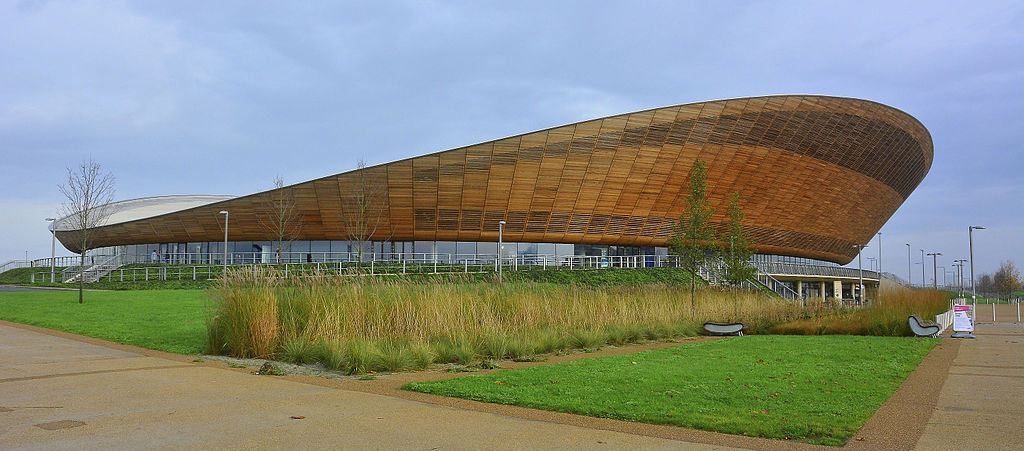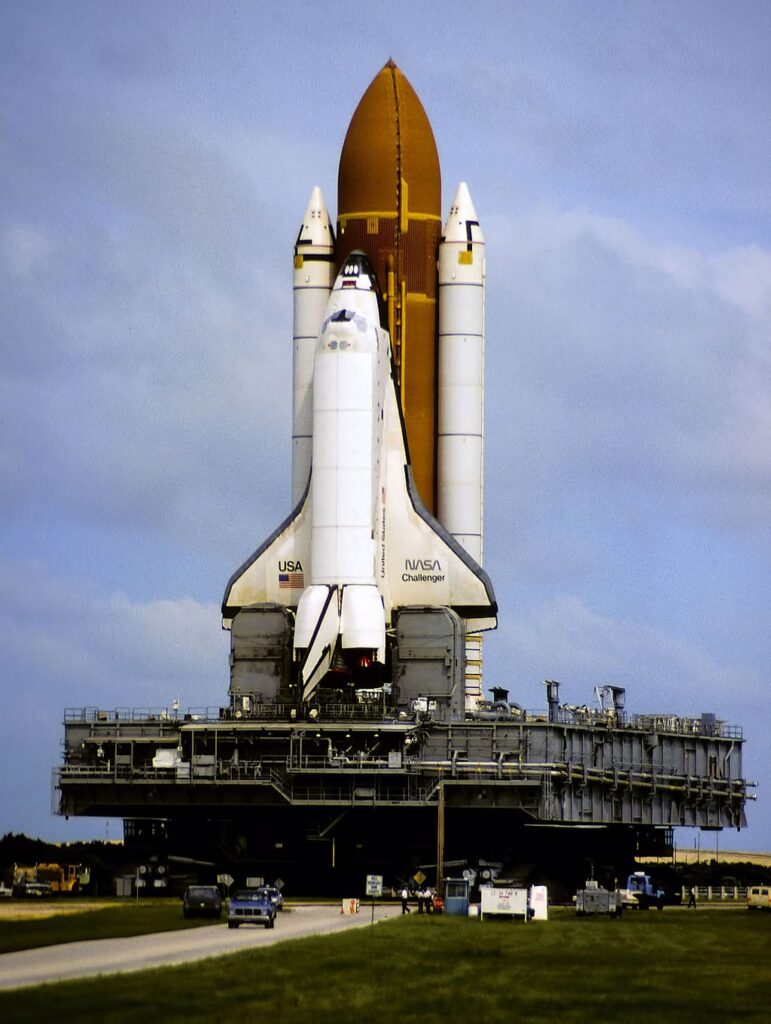What if your project is doomed before it even begins? That’s the reality for many initiatives that fail due to overlooked risks and undefined objectives during the pre-award phase.
In fact, 30% of projects collapse1 because critical risks weren’t addressed early on.
Pre-award project management is where the foundation is built—or where cracks start to form. This blog will guide you through actionable strategies to master the pre-award phase, from effective risk management techniques to streamlining compliance and stakeholder expectations.
Let’s go!
What Is Pre-Award Project Management?
Pre-award project management is the crucial phase where you identify potential risks, manage client expectations, and set foundational elements before making any formal commitments. This stage includes:
- Crafting proposals
- Conducting thorough risk assessments
- Ensuring resources are aligned with project goals
According to recent data, 44% of businesses2 that implement effective project management report a higher quality of the final product showing the importance of mastering this phase.
Based on historical data, you should use tools like Monte Carlo simulations to estimate the likelihood of delays or cost overruns. By leveraging this tool, you can calculate risks can more accurately, allowing for better contingency planning.
Additionally, conducting a SWOT analysis during this phase helps identify internal strengths, weaknesses, and external risks, providing a clearer picture of the project’s landscape.
Another critical element is maintaining clear stakeholder communication. Establishing a RACI matrix (Responsible, Accountable, Consulted, and Informed) early on helps define roles and responsibilities, ensuring that everyone knows their part to minimize potential conflicts.
Regular stakeholder meetings or real-time collaboration through tools like Mirorim prevent miscommunication and keep the project aligned with client expectations from the outset.
Why Is Pre-Award Project Management So Essential?
The pre-award phase is often the foundation for the entire project lifecycle. Think of it as the blueprint phase in construction—without solid groundwork, even the best-laid plans will crumble. During this phase, project managers assess risks, align expectations with stakeholders, and outline the project’s scope and budget, setting the stage for execution.
This phase is critical because most projects fail because they lack alignment with business goals, a flaw often originating in the pre-award phase. By identifying risks early and developing detailed plans, the pre-award phase helps mitigate future issues, including scope creep, budget overruns, and timeline delays.
Consider it like mapping a journey: if you don’t plan your route, you’ll likely take detours, run out of gas, or worse, never reach your destination. Project managers who fail to dedicate enough time to pre-award planning often find themselves firefighting in later stages, trying to correct issues they could have avoided with better initial planning.
Tools like SWOT analysis and Monte Carlo simulations enable you to foresee potential risks and plan accordingly. Regular stakeholder communication, facilitated by tools such as Microsoft Teams or Slack, ensures everyone is on the same page from the start.
In short, mastering pre-award project management isn’t just about completing paperwork—it’s about proactively setting up your project for success by anticipating risks and managing expectations before you even break ground.
Key Components of Pre-Award Project Management

1. Proposal Development
A strong project proposal is the backbone of pre-award project management to align the project with the client’s objectives. Developing such a proposal begins with an in-depth understanding of the client’s needs and the project’s scope.
Start by conducting thorough research on the client’s industry, pain points, and goals. This foundation will enable you to craft a proposal that speaks directly to their needs, showing that you understand both their challenges and how to solve them effectively.
Next, outline a clear project approach that includes the methodology, deliverables, and how each step aligns with the client’s business objectives. Be concise but detailed in demonstrating how your approach addresses their specific requirements.
Transparency is key; ensure the proposal highlights how project risks will be managed, particularly during execution.
Additionally, use visual elements like timelines, work breakdown structures (WBS), and cost estimates to communicate the proposal clearly. Studies3 show that proposals using visual aids can enhance understanding and decision-making for stakeholders.
Tip: Use a proposal development checklist to ensure client alignment:
- Conduct thorough research on the client and their industry.
- Clearly define the project scope, objectives, and methodology.
- Include a detailed timeline with key milestones and deliverables.
- Incorporate a risk management plan.
- Provide a transparent and competitive budget breakdown.
2. Budgeting and Cost Estimation
When it comes to budgeting and cost estimation in the pre-award phase, Earned Value Management (EVM) is a powerful technique that provides an objective view of project performance.
EVM integrates scope, schedule, and cost data to offer early warnings about potential budget overruns and timeline delays, helping project managers take corrective action before things go off track.
By comparing Planned Value (PV), Earned Value (EV), and Actual Cost (AC), EVM calculates critical performance metrics such as the Cost Performance Index (CPI) and Schedule Performance Index (SPI), which indicate how well your project is adhering to budget and schedule.
For example, a CPI of less than 1 shows that the project is over budget, while an SPI of less than 1 indicates delays. These insights allow you to adjust resources, recalibrate the schedule, and communicate realistic forecasts to stakeholders early in the process.
Actionable Tip: Use EVM to track your project’s cost and schedule metrics continuously. Start by establishing a Performance Measurement Baseline (PMB), then use EVM formulas like Cost Variance (CV) and Schedule Variance (SV) to monitor progress.
This data will help you forecast costs and identify issues before they escalate, ensuring better budget adherence throughout the project lifecycle.
3. Risk Assessment

Identifying and mitigating risks early in the pre-award phase is essential for project success. Risk assessment enables project managers to anticipate potential obstacles and develop strategies to either avoid or minimize their impact.
A great starting point is to involve the entire team in brainstorming sessions or interviews to uncover both obvious and hidden risks. Methods such as SWOT analysis (Strengths, Weaknesses, Opportunities, and Threats) help categorize internal and external risks, while visual tools like Fishbone Diagrams identify the root causes of potential problems.
Once you identify risks, the next step is to evaluate their likelihood and impact using a Risk Matrix. This tool allows you to prioritize risks based on their severity and probability, enabling you to focus your mitigation efforts on the most critical areas.
Actionable Tip: Use a Risk Matrix template to visually map out risks by their likelihood and impact. Pair this with a SWOT analysis to systematically assess risks from both internal and external sources, ensuring your project can handle challenges before they escalate. These tools help with identification and guide the planning of proactive strategies to minimize potential disruptions.
Best Practices of Pre-Award Project Management
Client Engagement and Communication

Effective client engagement and communication are key to avoiding project misalignment and delays, and the RACI matrix is one of the best tools to facilitate this. A RACI matrix helps define roles within a project by specifying who is Responsible for executing tasks, Accountable for decisions, Consulted for expertise, and Informed about project progress. This structured approach ensures clarity in decision-making, essential in managing large, complex projects with multiple stakeholders.
For example, in one project involving a software development firm launching a mobile app, role confusion delayed key decisions and approvals. By implementing a RACI matrix, the team could clearly define that the QA team was responsible for testing, while the QA lead was accountable for the final approval.
The development team was consulted on bug fixes, and the project manager was kept informed of progress. This clear role assignment streamlined communication and eliminated redundant efforts, helping the project stay on track.
Tip: Use a stakeholder map alongside the RACI matrix to categorize your stakeholders by their influence and interest in the project. This ensures that communication is targeted and efficient, addressing the right people at the right times.
Document Preparation and Review

During the pre-award phase, the quality of your document preparation and review directly influences the project’s overall success. Key documents such as the Project Proposal, Project Charter, Business Requirements Document, Risk Register, and Project Schedule are the foundation for communication, planning, and risk management. However, to ensure the success of these documents, it’s essential to create them and manage and review them systematically.
For example, a Project Proposal should detail specific objectives, key milestones, and how the project will align with the client’s needs. The Risk Register must identify risks early on, categorize them by probability and impact, and be updated regularly to avoid surprises mid-project.
In one case, the Colorado Department of Transportation used a detailed Risk Register for a highway project, helping to manage risks such as utility relocations and required approvals for railway bridge redesigns. This approach enabled the team to foresee delays and proactively manage approvals, preventing costly overruns.
Effective document management requires tools like Confluence for real-time collaboration or Microsoft SharePoint for document versioning. These platforms ensure all stakeholders can access the latest versions of essential documents. Regular reviews at project milestones can prevent misalignment and allow teams to adapt to changing project needs.
Tip: Use a cloud-based document management system to ensure version control and accessibility. Schedule regular document reviews with key stakeholders, ensuring alignment at every stage of the project.
For example, weekly reviews of the Risk Register with the team help catch emerging issues before they escalate, while Gantt charts can keep timelines and dependencies clear for everyone.
Team Coordination

Cross-functional collaboration is essential during the pre-award phase because it brings together diverse perspectives and expertise from multiple departments, such as finance, legal, technical, and project management, ensuring all stakeholders align with the project’s goals.
However, effective collaboration doesn’t come without challenges. Teams often face issues like misaligned priorities, communication breakdowns, or siloed operations. For example, in large organizations, different departments may prioritize their own goals over the project’s overall success.
To overcome these hurdles, project managers must create an environment that fosters open communication and shared responsibility across departments.
To keep all departments synchronized, a proven solution to these challenges is using Scrum techniques, such as daily stand-up meetings and sprint planning. Daily stand-ups allow team members to communicate progress and blockers to address issues promptly before they escalate.
Sprint planning helps break down complex tasks into manageable phases, where cross-functional teams can work toward common objectives, delivering incremental value throughout the project.
Tip: Assign a Scrum Master or Project Manager to facilitate communication and collaboration across departments. This individual should ensure all team members understand their roles and stay aligned with the project’s milestones.
Additionally, consider implementing a RACI matrix to clearly define roles and responsibilities and ensure that accountability is shared across teams. This structure prevents conflicts and confusion, especially in projects where cross-functional collaboration is critical to success.
Challenges and Considerations
Two of the most common are contract negotiation delays and unrealistic client expectations. Negotiation delays occur when parties struggle to align on contract terms, leading to prolonged discussions that eat into valuable project time. Unrealistic expectations—where clients overestimate what can be achieved within a specific budget or timeframe—add further complexity, as these expectations must be managed delicately to prevent later conflicts.
Navigating these negotiations efficiently is a significant challenge. For instance, negotiating with unconventional clients can present difficulties, as they may have distinct expectations that deviate from industry norms, requiring the project manager to be adaptable and patient. To avoid lengthy back-and-forths, it’s critical to establish clear communication and a mutual understanding of goals at the very start.
Tip: Use a structured negotiation process. Start by clearly defining each party’s priorities and identifying potential sticking points. Tools like contract management software can also help streamline the review process, reducing delays and keeping track of changes made during negotiations.
When managing client expectations, consider developing a Scope Definition Document early on, outlining deliverables, constraints, and potential risks. Presenting this document during the initial phase of negotiations can help ground the conversation in reality.
Key Considerations
To tackle the root causes of issues that arise during the pre-award phase, it’s essential to adopt a methodical approach. Tools like Fishbone Diagrams (cause-and-effect diagrams) are handy for identifying and visualizing the root causes of challenges. By breaking down potential problems, such as delays or miscommunications, you can uncover and address the underlying issues before they escalate.
Tip: Conduct a lessons-learned meeting with your team after every pre-award phase. During this session, review what went well, where delays or misunderstandings occurred, and how future processes can be improved. This iterative approach to refining your pre-award processes will reduce risk and increase efficiency in future projects.
Case Studies and Real-Life Examples
1. London 2012 Velodrome Project

The success of the London 2012 Velodrome4 is a direct result of its meticulous pre-award project management. This £68 million project was delivered ahead of schedule and within budget, thanks to the use of the NEC3 Engineering and Construction Contract. The NEC3 framework promoted transparency, collaborative risk management, and swift decision-making.
One key pre-award practice was value engineering, which reduced material costs by eliminating 1,000 tonnes of unnecessary steel through a lightweight cable-net roof system. Additionally, the Velodrome achieved a 31% improvement in energy efficiency5 due to early focus on sustainability.
Lessons Learned:
- Early risk assessments and value engineering can reduce project costs and improve sustainability outcomes.
- Use contracts like NEC3 for collaborative risk-sharing, transparent budgeting, and timely decision-making during pre-award phases.
- The project achieved a 31% energy efficiency improvement, highlighting the value of early sustainability planning.
2. Tesla Electric Car Project

Tesla’s development of the first electric vehicle, the Roadster, was successful due to its rigorous pre-award planning. Tesla identified risks early on related to battery technology, supply chain limitations, and regulatory compliance.
Collaborating with legal experts and key stakeholders during the pre-award phase ensured that production aligned with stringent safety and legal standards. Tesla used SWOT analysis and risk matrices to evaluate potential risks and opportunities in this innovative field.
Lessons Learned:
- Early collaboration with regulatory bodies and detailed risk assessments help mitigate risks in disruptive technology projects.
- Use SWOT analysis and risk matrices during the pre-award phase to assess risks and opportunities.
- Tesla met production deadlines 15% earlier than forecasted due to pre-award efforts to mitigate supply chain risks.
3. NASA Challenger Space Shuttle Project

The Challenger Space Shuttle6 disaster emphasizes the dangers of inadequate pre-award risk management. During the pre-award phase, engineering concerns about the shuttle’s O-rings were raised, but the risks were not adequately communicated or addressed.
This tragedy led to NASA overhauling its risk assessment and decision-making processes for future projects, including more rigorous pre-award risk identification.
Lessons Learned:
- Thorough risk identification and clear communication are critical during the pre-award phase, especially in high-risk projects.
- Implement rigorous pre-award risk reviews with all technical and engineering stakeholders.
- Unlike Tesla, which actively managed risks and aligned stakeholders, NASA failed to address critical technical risks during the pre-award phase, leading to catastrophic failure.
4. Three Gorges Dam Project (China)

The Three Gorges Dam7, the world’s largest hydroelectric project, faced numerous pre-award challenges, particularly related to environmental and social impacts. The pre-award phase involved comprehensive risk assessments and early stakeholder engagement, including environmental groups and affected communities.
These efforts helped mitigate some of the long-term ecological and social concerns, although certain issues persisted during the project’s execution.
Lessons Learned:
- Early stakeholder engagement and environmental risk assessments during the pre-award phase are essential for managing large-scale infrastructure projects with broad social impacts.
- Use environmental impact assessments and stakeholder negotiation frameworks during the pre-award phase to address potential project risks.
- While some long-term environmental concerns persisted, early risk assessments helped streamline the project, ensuring it met its deadlines and key goals.
Key Post-Award Considerations
Managing Compliance
Good pre-award project management lays the foundation for effective compliance tracking during the post-award phase. When contracts are drafted with clear terms and conditions from the start, it becomes easier to ensure both parties adhere to these terms after the contract is awarded.
Pre-award processes that emphasize compliance with industry standards, such as regulatory and internal policies, significantly reduce the risk of non-compliance down the line. This is especially critical for industries with stringent regulations, like healthcare (HIPAA) and finance (SOX), where penalties for non-compliance can be hefty.
Additionally, contract lifecycle management (CLM) software automates compliance tracking by centralizing all contract data, reducing the likelihood of overlooked terms or deadlines.
Tip: Use a CLM solution to establish a centralized repository for contracts and automate compliance notifications. This ensures that contract obligations are consistently monitored and managed, reducing the risk of penalties and missed deadlines.
Tracking Amendments
Post-award contractual changes are inevitable, whether due to shifting business requirements, regulatory updates, or unexpected challenges. Managing these amendments effectively requires real-time documentation and tracking tools to avoid confusion or non-compliance.
CLM tools offer features like automated clause-based reports, which allow you to easily update specific contract clauses across multiple agreements. This ensures that changes are accurately reflected without manual tracking, which is particularly valuable in industries subject to frequent regulatory changes.
Tip: Implement a digital CLM solution with clause-based reporting to track and manage amendments efficiently. This ensures that changes are reflected across all relevant documents and stakeholders are aware of updates in real-time.
Obligation Tracking
Tracking deliverables and obligations is one of the most critical aspects of post-award contract management. CLM tools streamline this process by automatically notifying stakeholders of upcoming milestones, renewal dates, and other contractual obligations.
This eliminates the risk of missed deadlines and helps prevent costly delays or legal disputes. With granular obligation management, CLM solutions help ensure that all parties meet their contractual commitments on time.
Actionable Tip: Use a CLM tool to set up automated alerts for key deliverables and contractual obligations. This proactive approach helps manage deadlines and prevents potential contract breaches, ensuring smooth contract execution.
Conclusion
The pre-award phase is where projects succeed or fail—research shows that poor planning during this stage accounts for over 30% of project failures8 due to unidentified risks and unclear objectives.
From comprehensive risk mitigation to strategic stakeholder communication, strong pre-award management is essential to avoid delays, budget overruns, and scope creep.
By laying a solid foundation with well-defined goals, risks, and contracts, you drastically improve the likelihood of smooth project execution.
Don’t let poor pre-award planning derail your project. Mirorim’s powerful features—real-time communication, team collaboration, and task management—are tailored to ensure your pre-award phase is efficient and precise.
Sign up for Mirorim today and ensure your next project is built on a rock-solid foundation from the very start.
References
- Matta, N. (2020, February 7). Why Good Projects Fail Anyway. Harvard Business Review. https://hbr.org/2003/09/why-good-projects-fail-anyway ↩︎
- Top 15 Project Management Case Studies with Examples. (2024, May 24). https://www.knowledgehut.com/blog/project-management/project-management-case-study ↩︎
- Shabiralyani, G., Hasan, K. S., Hamad, N., & Iqbal, N. (2015). Impact of Visual Aids in Enhancing the Learning Process Case Research: District Dera Ghazi Khan. In Journal of Education and Practice: Vol. Vol.6 (Issue No.19, pp. 226–227). https://files.eric.ed.gov/fulltext/EJ1079541.pdf ↩︎
- NEC3 Case Study: London 2012 Olympic Velodrome | APM. (n.d.). https://www.apm.org.uk/resources/find-a-resource/case-studies/nec3-case-study-london-2012-olympic-velodrome/ ↩︎
- NEC3 Case Study: London 2012 Olympic Velodrome | APM. (n.d.-b). https://www.apm.org.uk/resources/find-a-resource/case-studies/nec3-case-study-london-2012-olympic-velodrome/ ↩︎
- UK Olympic Overlay Design and New Build. (2024, August 7). https://www.isgltd.com/uk/en/projects/uk-olympic-overlay-design-and-new-build ↩︎
- The Three Gorges Project. (2001). 1. https://www.thegeographeronline.net/uploads/2/6/6/2/26629356/114_three_gorges_project.pdf ↩︎
- 10 Project Failures That Stunned the World. (2023, October 25). Project Management Nerd. https://projectmanagementnerd.com/2021/07/07/10-project-failures-that-stunned-the-world/ ↩︎

